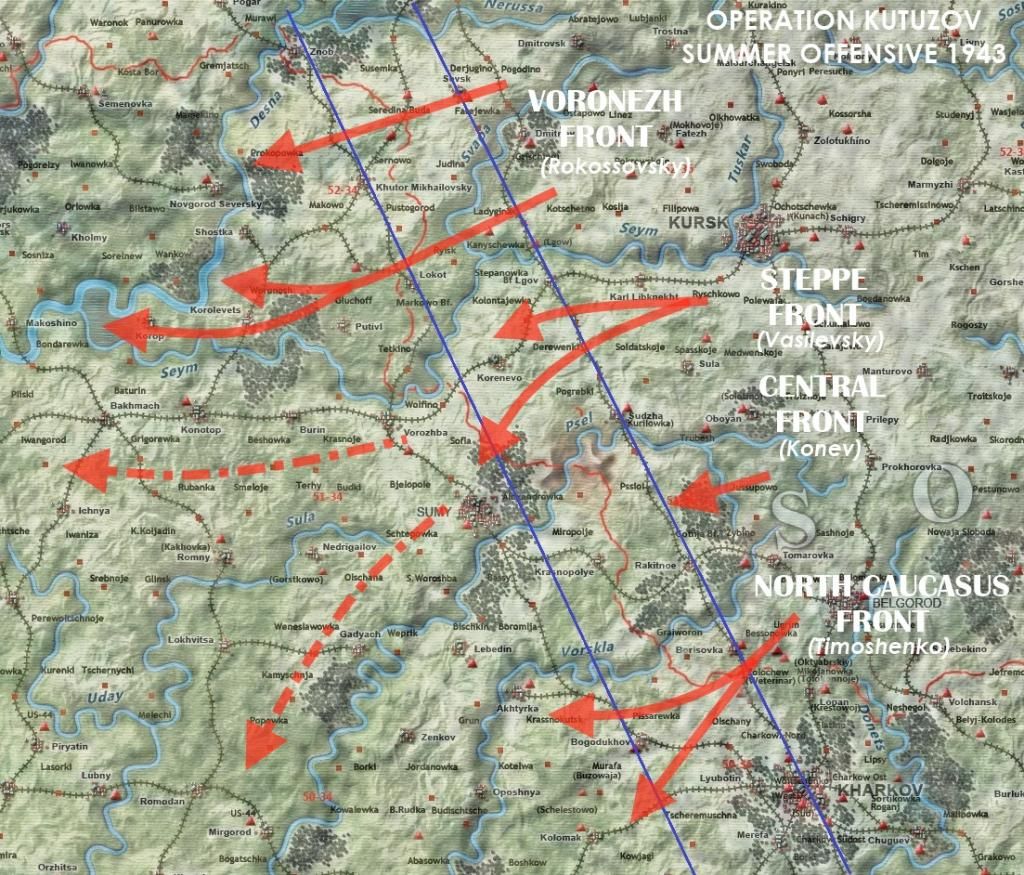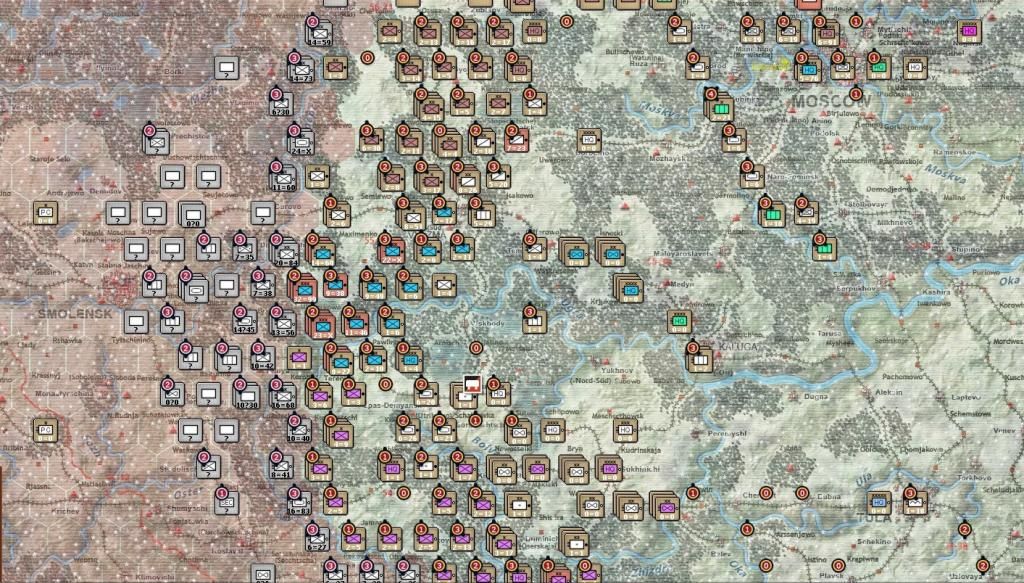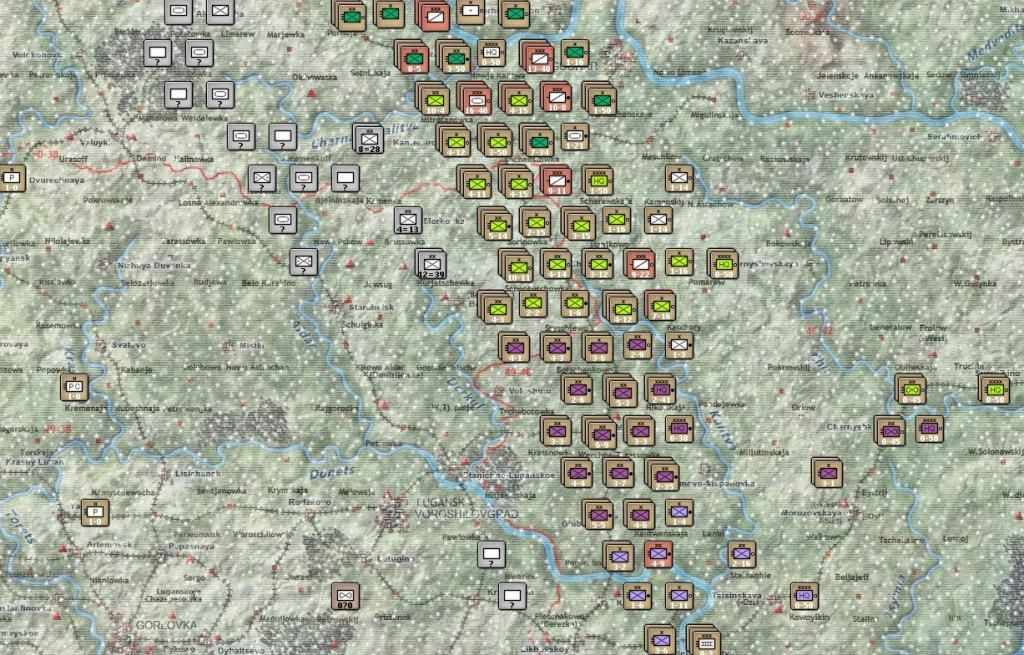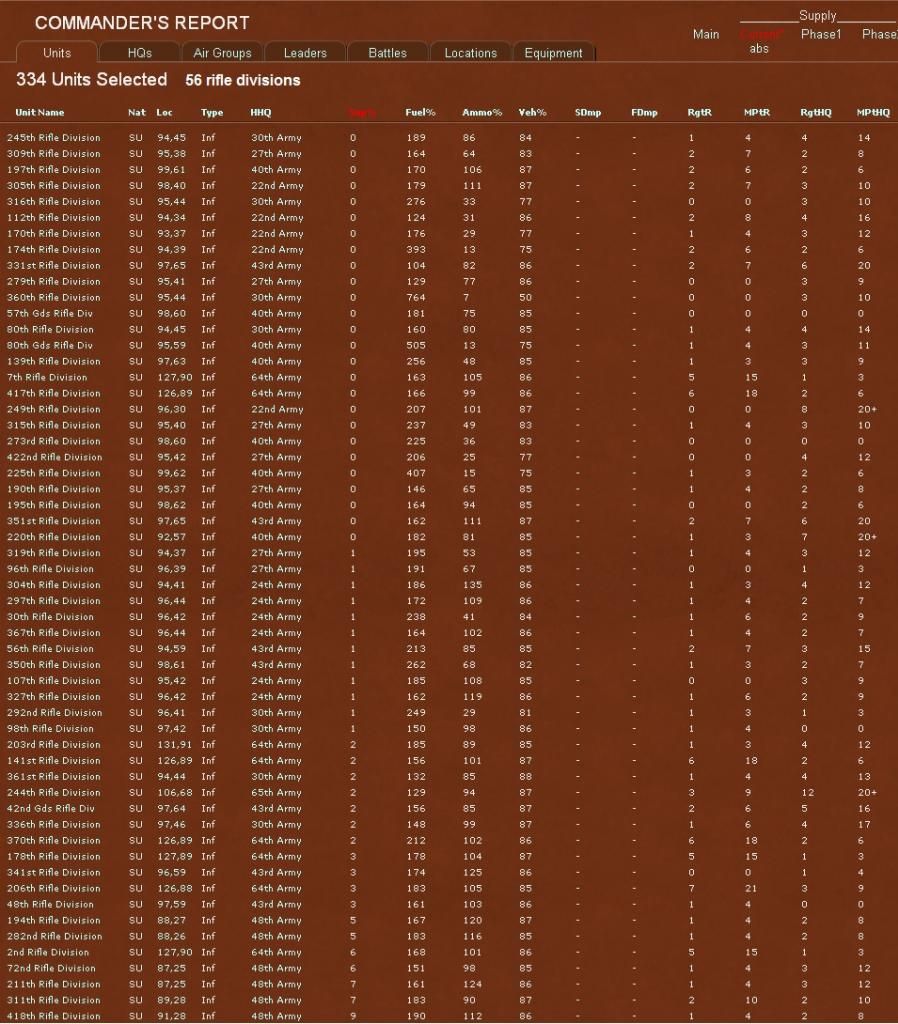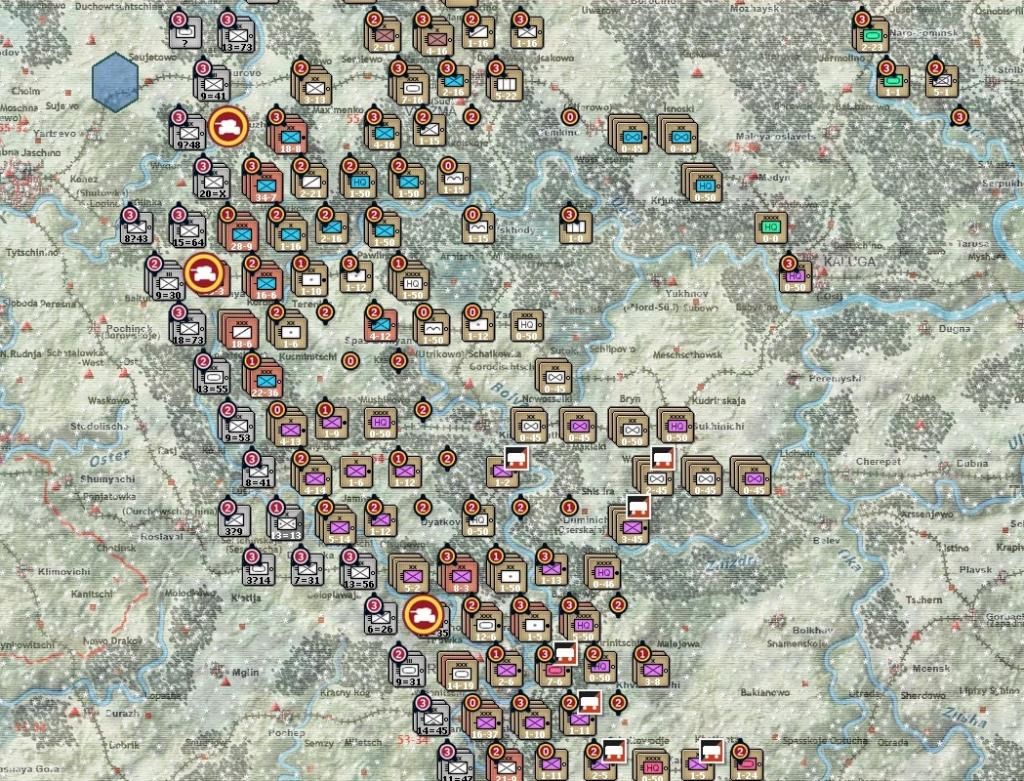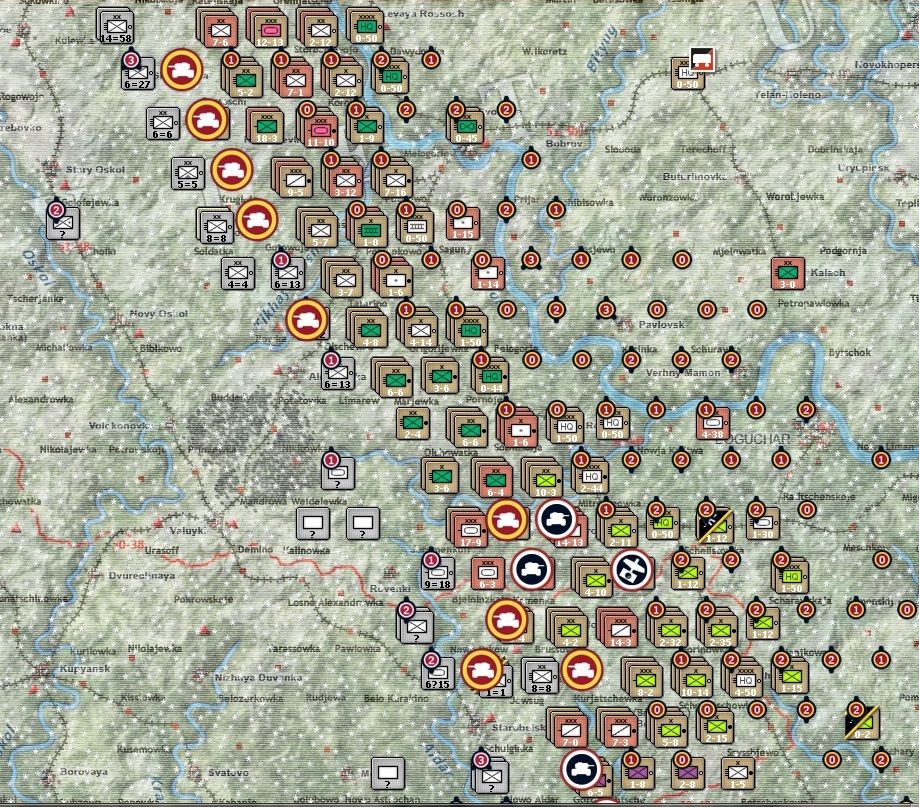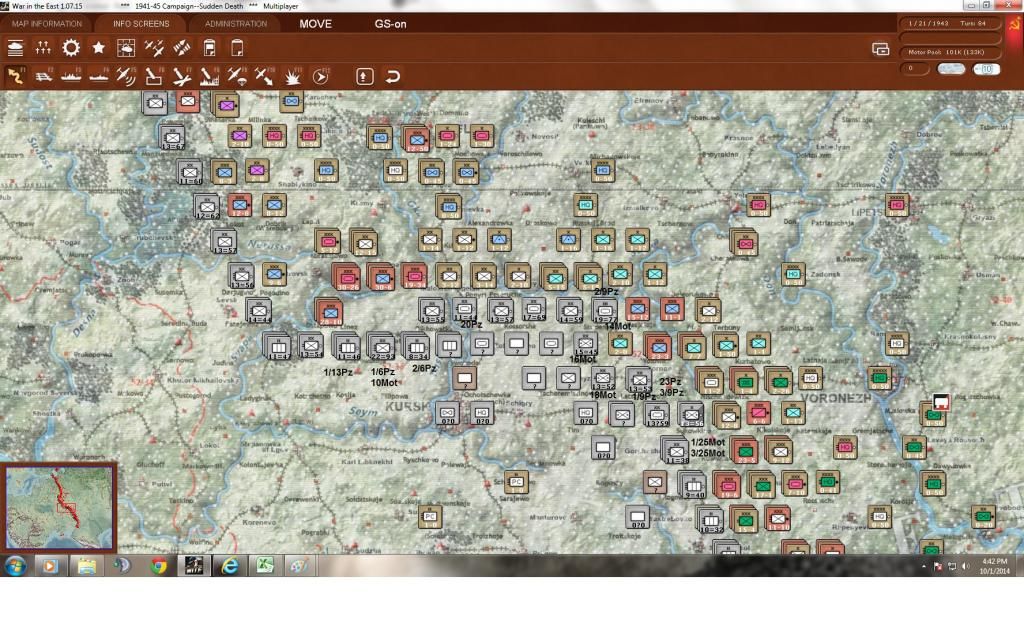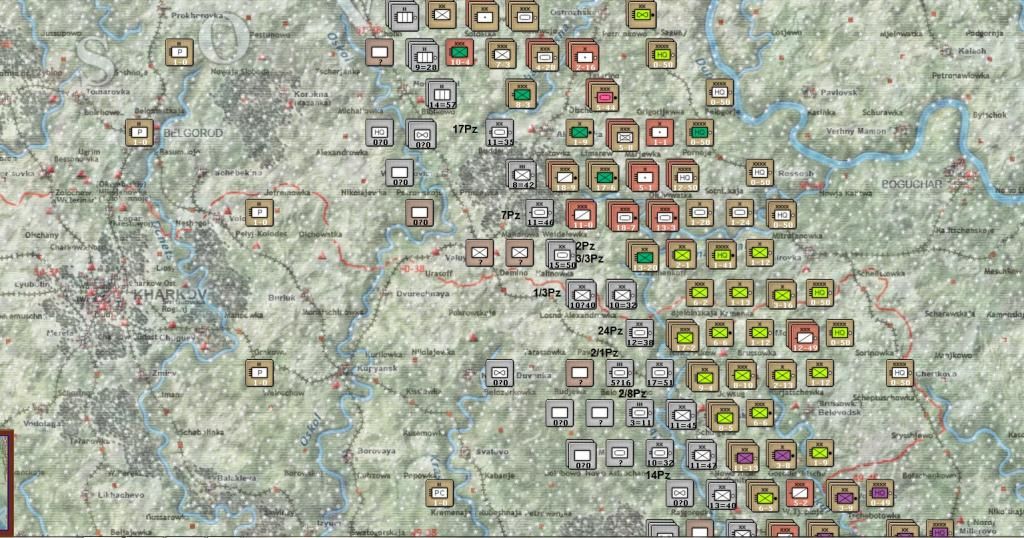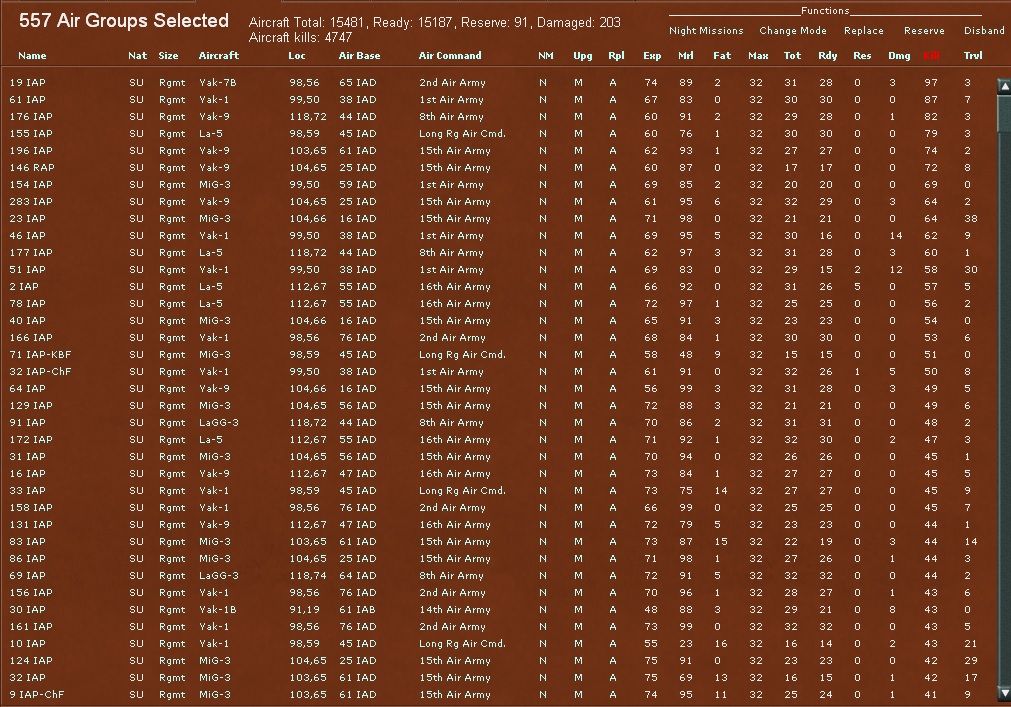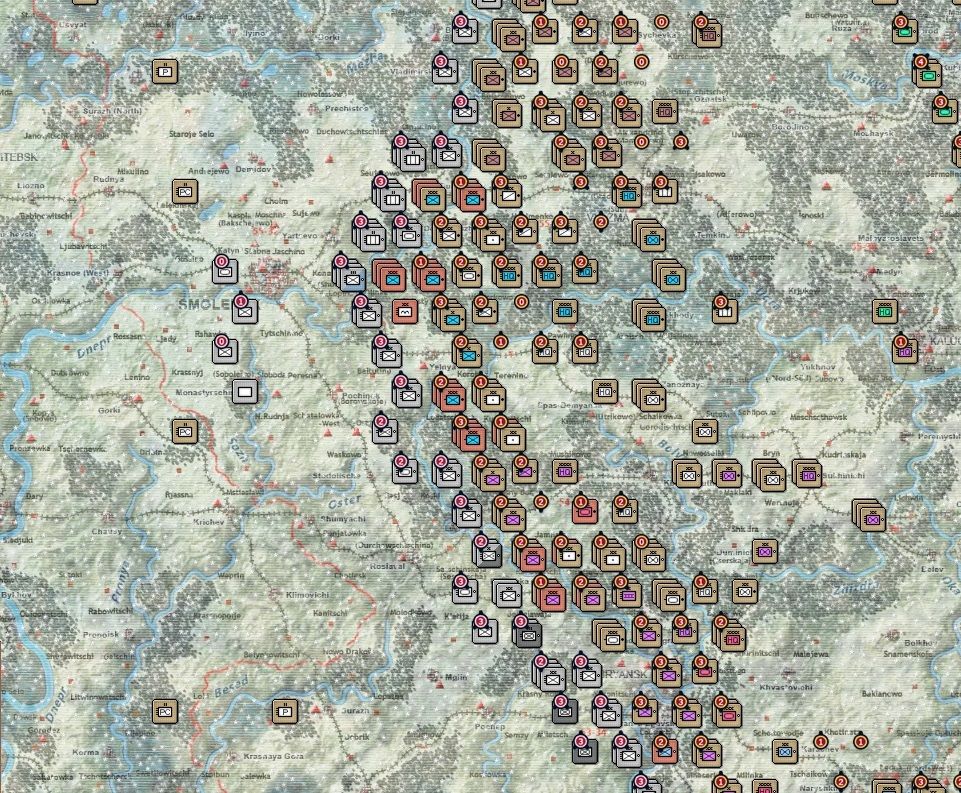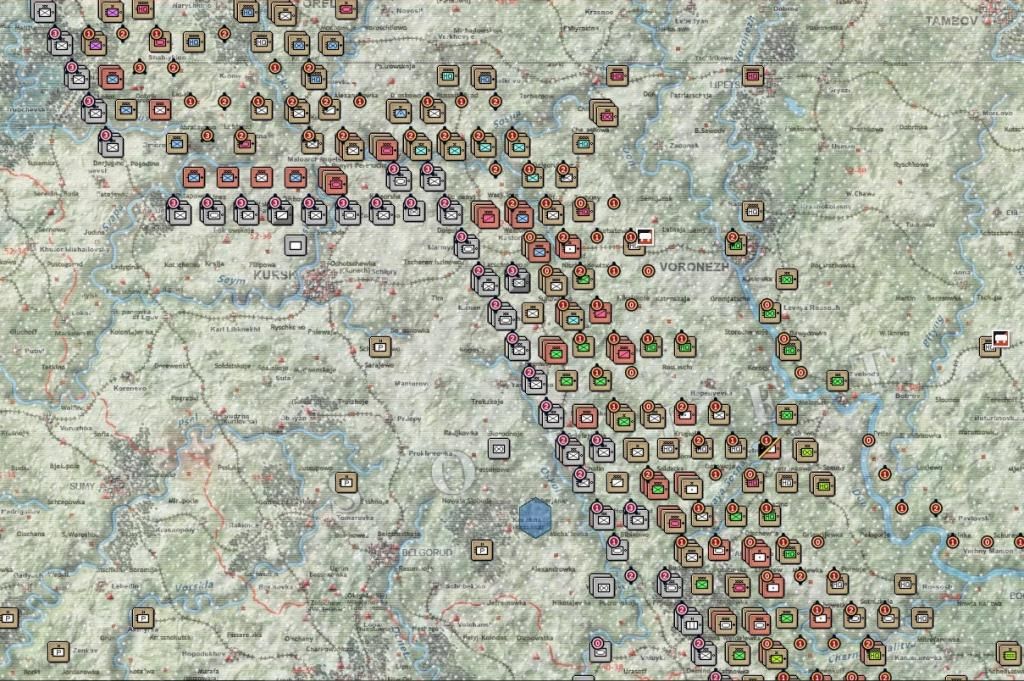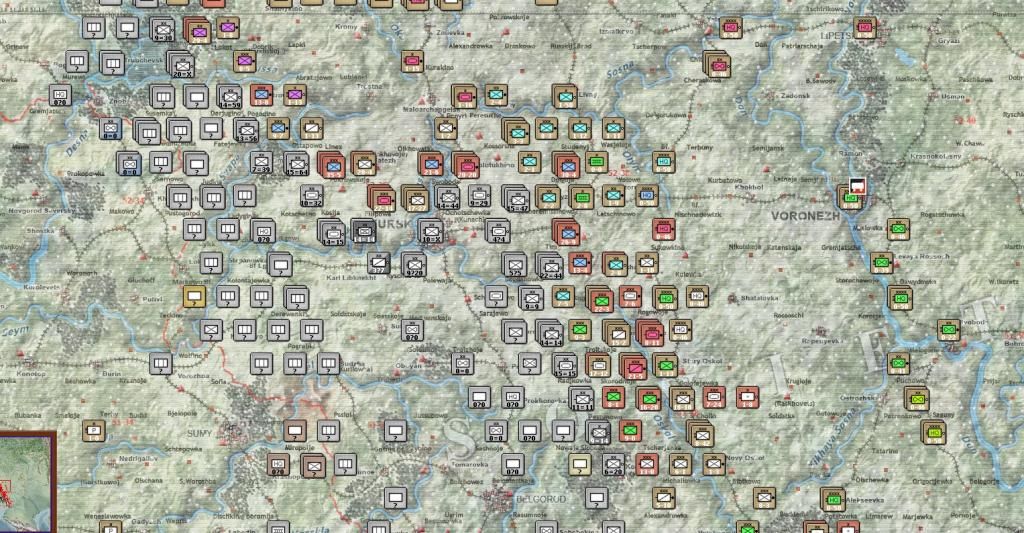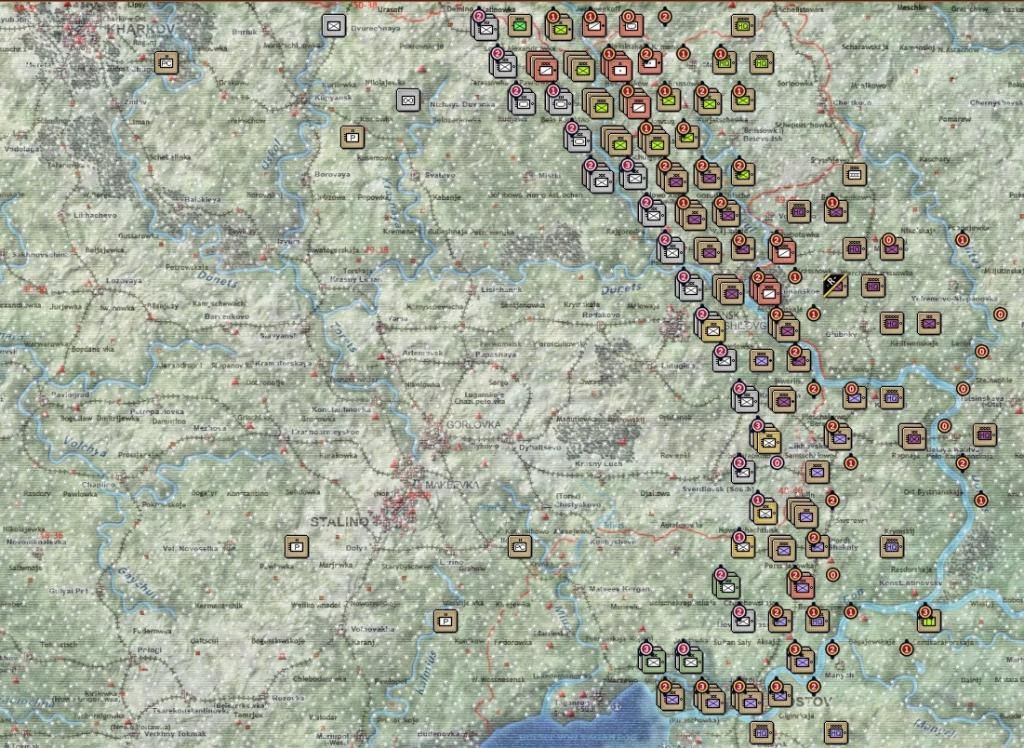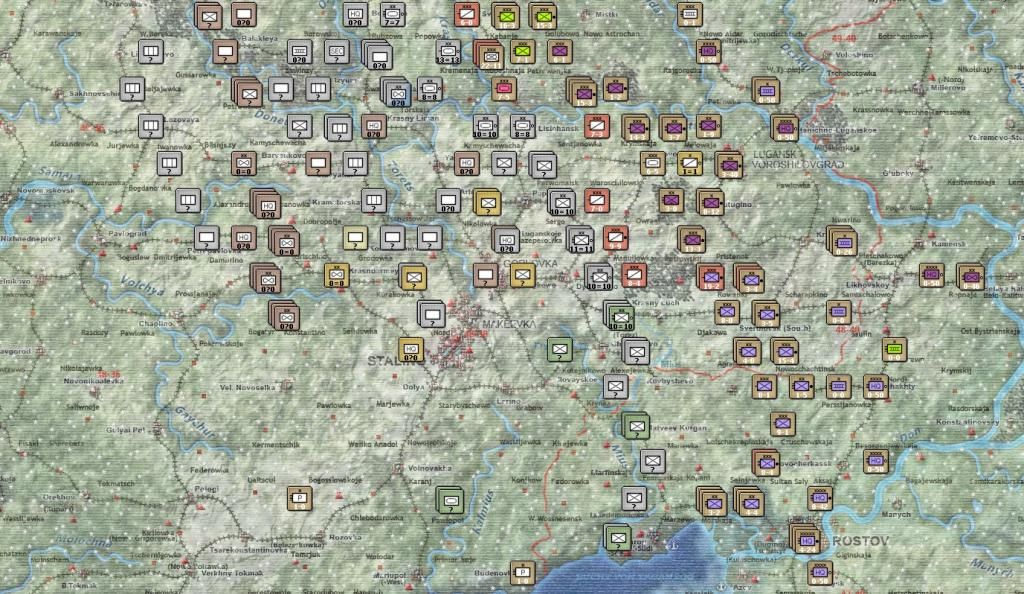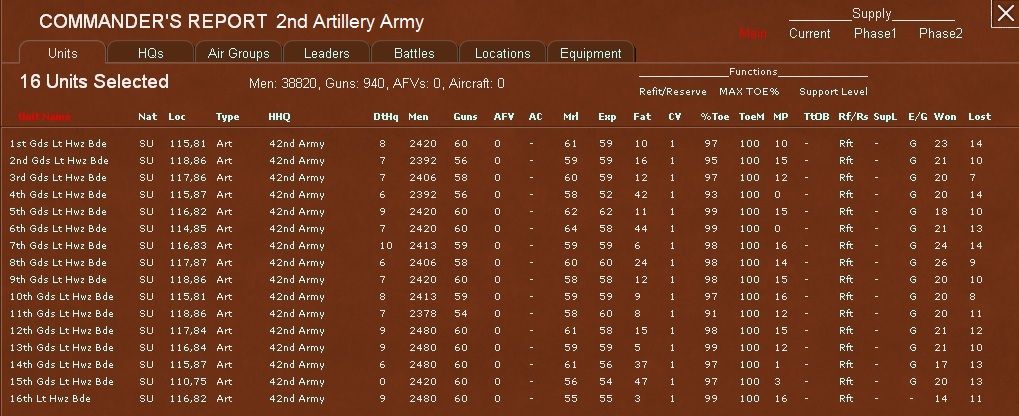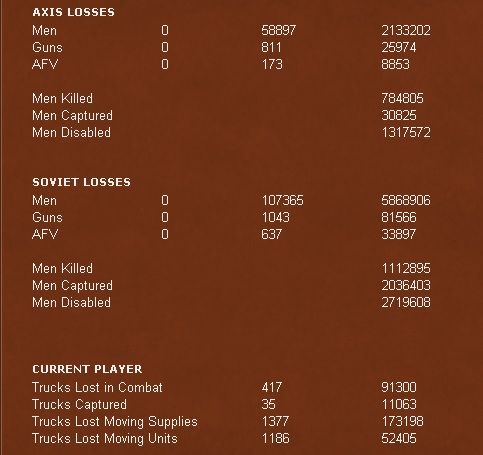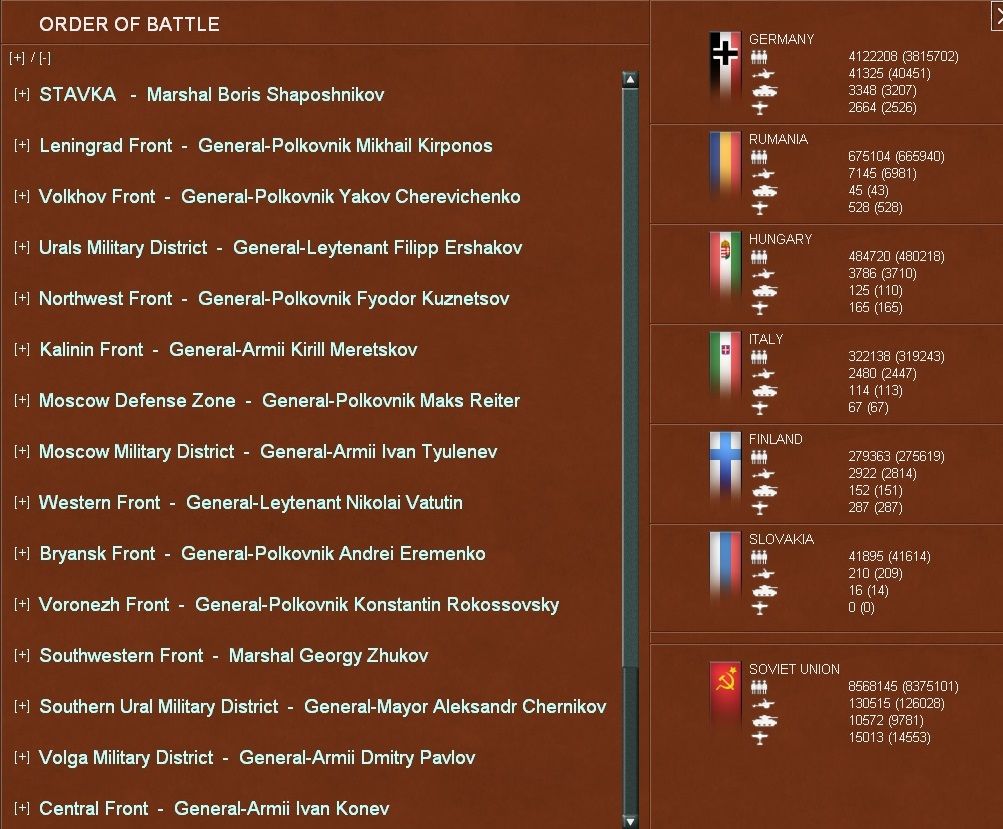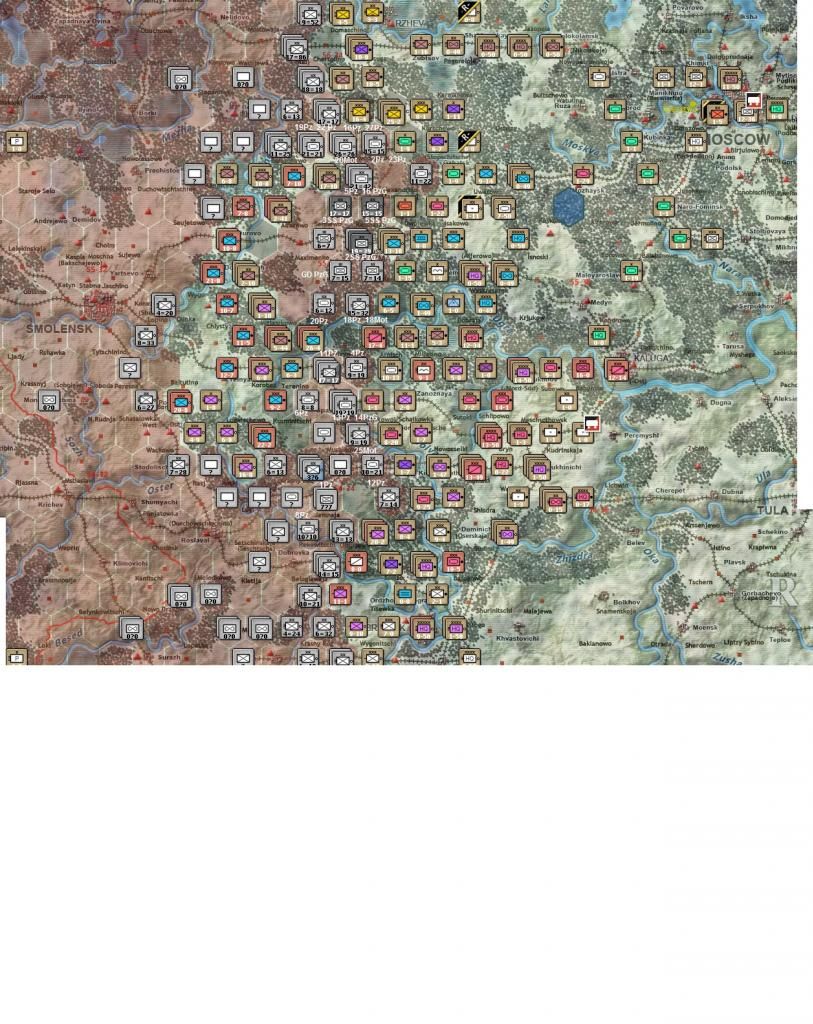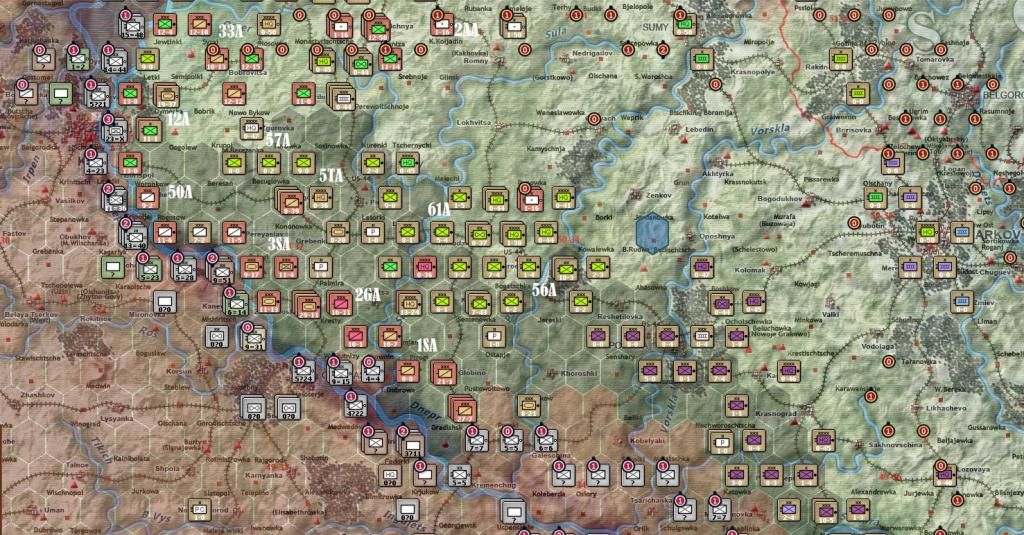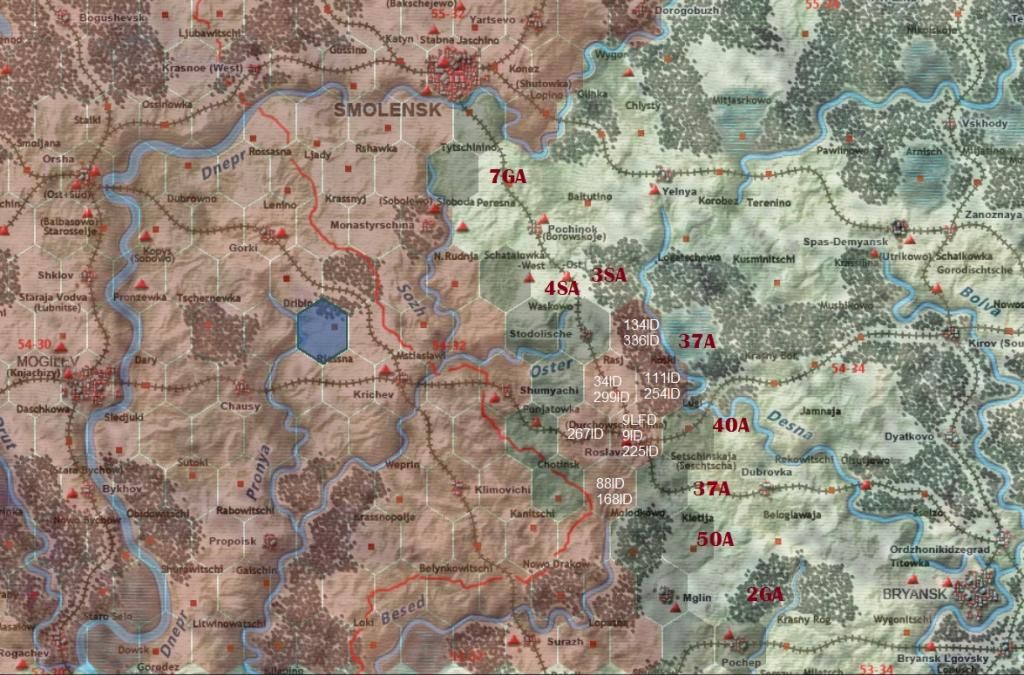By the end of March, it had become apparent that Axis forces in the Don Basin intended to defend a line 30 miles deep and which included the great city of Kharkov. This line largely ran northwest-southeast from the River Desna to the Black Sea and contained extensive fortified zones. Pressure by Voronezh and Central Fronts during the 42-43 winter campaign was fast making a German defense of Kursk untenable. There seemed a reasonable chance that the Germans might withdraw from the city before summer. Consequently in early April, Army General Vasilevsky submitted a plan to the STAVKA to liberate much of the Don Basin by way of a strategic offensive to the Dnepr.
Voronezh Front under Colonel General Rokossovsky would drive west to the River Desna. Their southern boundary would be the River Seym. Voronezh Front would also have two armies of General Pavlov’s Volga Military District to call upon in support if needed.
Central Front under Army General Konev would strike Axis forces in a two-pronged attack. The primary attack would be between the Rivers Seym and Psel with the initial objective of Sumy. A secondary attack would take place between the Rivers Psel and Vorskla. The main intention of the secondary attack was to pin down the forces to their front, rather than seek a breakthrough. Central Front would also have the support of 2nd and 3rd Artillery Armies.
North Caucasus Front under Marshal Timoshenko would drive west with the Vorskla as the northern boundary with Central Front. Kharkov to the south would be bypassed as Transcaucasus and Southern Fronts would pin down Axis forces in their sectors or move westwards in the event a general advance was called for.
Steppe Front to be formed in June would consist of exploitation forces in the form of cavalry, tank and mechanized corps. Units would break through the remaining defensive line between the Seym and Psel after initial Central Front attacks. After Sumy was captured, Steppe Front would fan out and threaten to trap Axis forces between the Seym and the Vorskla. In the event of a successful breakthrough, Steppe Front would drive towards the Dnepr in the general direction of Kiev.
In general support of this operation were two railroad repair corps under STAVKA. These units would focus their efforts on repairing trackage along the main advance south of the Seym as well as west of Kharkov, should the Axis forces withdraw from that area.
Air forces in support of this operation included two transport divisions that would deliver fuel to exploitation forces where a breakthrough looked likely.
Four weeks later, Stalin approved the strategic offensive, designated Operation Kutuzov.
